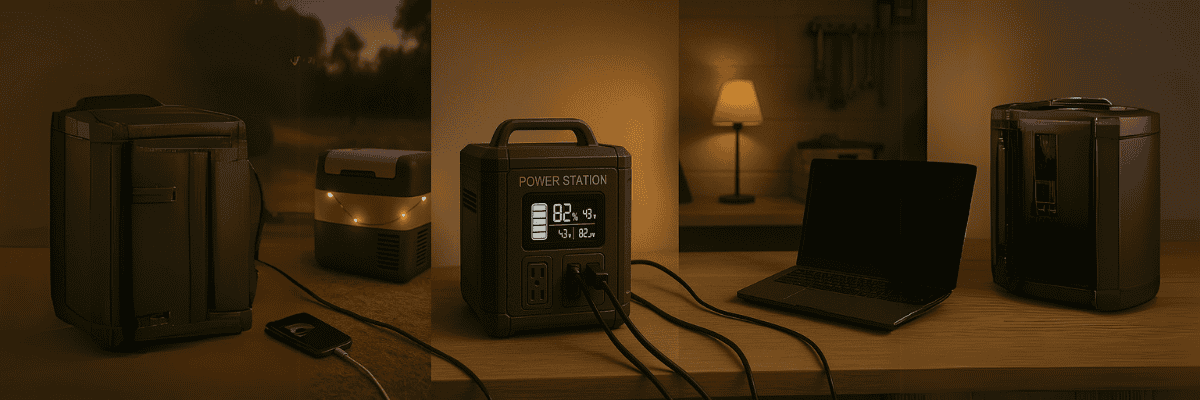
How Do You Use a Portable Power Station?
Using a portable power station might seem straightforward, but a few key tips can help you get the most out of it—safely and efficiently. Whether you're heading off-grid, need emergency backup at home, or want a clean energy source for outdoor work, this guide covers everything from how to turn on a portable power station to understanding portable power stations and their many real-world uses.
Not sure which power station is right for you?
Take the quiz!
Getting Started with Your Portable Power Station
Initial Charging, Display, and Turning On
Before using it for the first time, plug in the station and let it reach a full charge. Most units include a wall charger, but you can also use solar or car charging options. While charging, take time to explore the digital display—it shows charge levels, wattage in/out, and estimated runtime. Monitoring this info helps prevent overloads and manage power more effectively.
How to turn on a portable power station? For most models, it's as simple as pressing and holding the main power button for 2–3 seconds. You may also need to activate specific ports—like AC, DC, or USB—using separate buttons. Lights or a digital display will show status updates including battery charge and output.

What Can You Run on a Portable Power Station?
Power Output, Device Matching, and Limits
From smartphones to mini fridges, portable power stations can support a surprising number of devices. What can you run on a portable power station? That depends on its rated output, usually measured in watts. A 300W unit can handle laptops, lights, and small fans, while a 2,000W station may run power tools or kitchen appliances. Always check both continuous and surge wattage requirements before plugging anything in.
Before connecting devices, add up their wattages. Overloading the power station can trigger an auto shut-off and wear down the battery over time. Devices with motors, like fridges or pumps, have surge needs—so leave some headroom in your usage plan. When in doubt, run high-drain gear one at a time.

Top Uses and Safety Tips for Your Portable Power Station
Popular Uses and Maintenance for Portable Power Station
Uses for portable power station setups include camping, mobile offices, events, and emergency backup. While camping, you can keep your esky cold, lights running, and devices charged without relying on fuel-powered generators. At home, power stations can keep modems, fans, or medical equipment running during blackouts. They're also ideal for small DIY projects, stalls, or off-grid workspaces.
Use your station in well-ventilated areas to avoid heat buildup. Store it in a cool, dry spot and wipe ports clean regularly. Charge it every few months if not in use to maintain battery health. And always avoid overloading—stick to essential devices, especially during emergencies.

Conclusion: Making the Most of Your Portable Power Station
Using a portable power station isn’t just about plugging things in—it’s about managing your power efficiently and safely. Now that you know how to turn on a portable power station, what you can run on a portable power station, and how to maintain it, you’re ready for anything—from blackouts to bush adventures. Whether you’re off-grid or just off the beaten path, a well-managed station gives you power where and when you need it.


